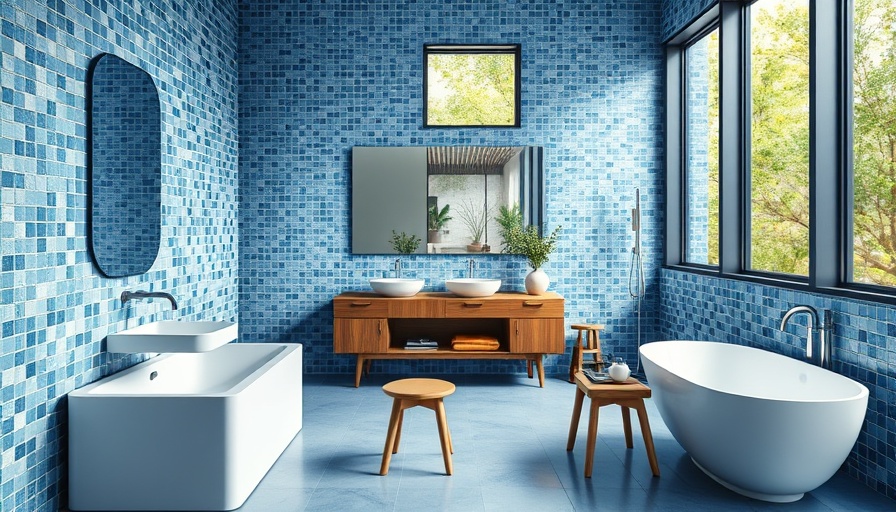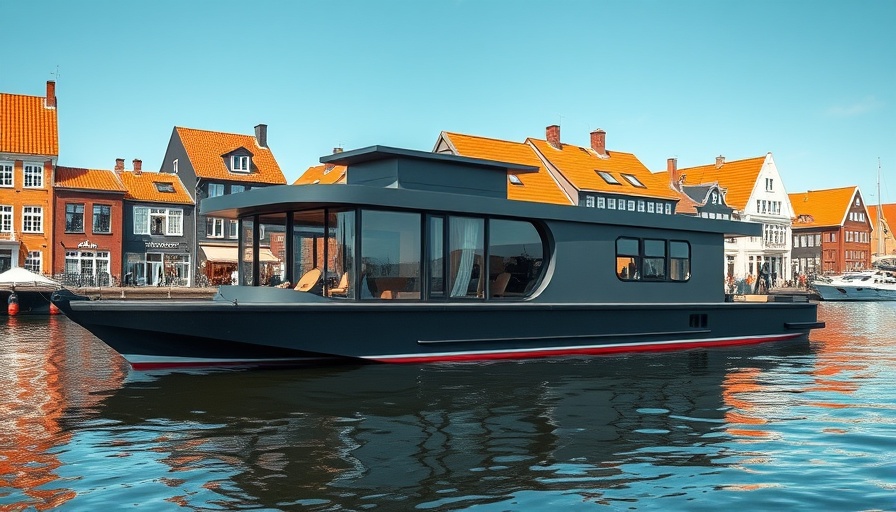
Discovering the Timeless Charm of La Maison Bernard
In the picturesque town of Maisons-Laffitte, just a half-hour train ride from Paris, lies La Maison Bernard, a striking villa originally designed by the Franco-American architect Edith Schreiber-Aujame in 1959. This architectural gem, steeped in rich history and modernist design principles, has recently experienced a thoughtful restoration by the talented duo from RREEL, Léa Cottreel and Rosalie Robert. Their expertise in heritage architecture brought new life to an extraordinary building while respecting its original essence.
Understanding the Architect's Vision
Edith Schreiber-Aujame, who trained under iconic designers like Walter Gropius, Eugene Beaudouin, and even the legendary Le Corbusier, infused her work with a unique blend of modernism and organic forms. La Maison Bernard is a prime reflection of this philosophy, showcasing an organic connection to its surroundings, similar to Le Corbusier’s work. The restoration process led by RREEL aimed not only to revive the villa’s aesthetic but also to honor Schreiber-Aujame's original vision, a crucial step that underscores the importance of historical context in architectural renovations.
The Restoration Journey: More Than Just Aesthetic
Initially, the new homeowners envisioned simple renovations, including updates to the kitchen and bathroom. However, RREEL convinced them to embark on a comprehensive restoration journey that involved an extensive archival research phase. This approach unveiled the villa's original design details that had been altered over time; an essential step that ensured the integrity of the restoration process. Remarkably, elements such as the original fireplace and bespoke furniture were restored, maintaining authenticity while adapting to the families' needs.
Modern Techniques Meet Historical Integrity
While many modern renovations prioritize convenience and aesthetic appeal, RREEL emphasized preserving the essential characteristics of La Maison Bernard, showcasing how contemporary architectural techniques can harmoniously blend with historical integrity. For example, the architects meticulously restored the original stonework and marble floors, demonstrating that modern equipment can create perfect finishes while honoring the villa's past.
Innovation in Design: The Villa’s Unique Features
What sets La Maison Bernard apart is its distinctly modernist features that reflect Schreiber-Aujame's avant-garde style. From sunbreakers to cast concrete elements, the villa encapsulates a profound artistic intention. Notably, the integration of functional spaces like the living area and kitchen through an open-plan design promotes interaction while enhancing the natural light within, ensuring the home remains vibrant and welcoming.
Lessons for Homeowners: Embracing Heritage in Renovation
For homeowners contemplating renovations, La Maison Bernard serves as an example of how investing in thoughtful restoration can yield significant rewards. It’s a reminder of the value of historical structures and the stories they carry. By preserving the essence of their homes, homeowners not only enhance their property value but also contribute to the rich tapestry of architectural heritage. RREEL's work stands as a blueprint for how to approach such delicate projects, where every choice made should reflect a balance between history and modern needs.
Final Thoughts: The Future of Architectural Restoration
As the renovation of La Maison Bernard shows, the intersection of history and contemporary design is vital in today's architectural landscape. As cities expand and modern designs dominate, preserving significant buildings like La Maison Bernard is essential. This not only maintains cultural identities but also inspires current and future generations of architects and homeowners to blend the wisdom of the past with the innovations of the present.
For those longing to explore these themes further and to see more stunning examples of architectural restorations, consider visiting similar historical sites or engaging in discussions on how modern living can coexist with our architectural heritage.
 Add Row
Add Row  Add
Add 






Write A Comment